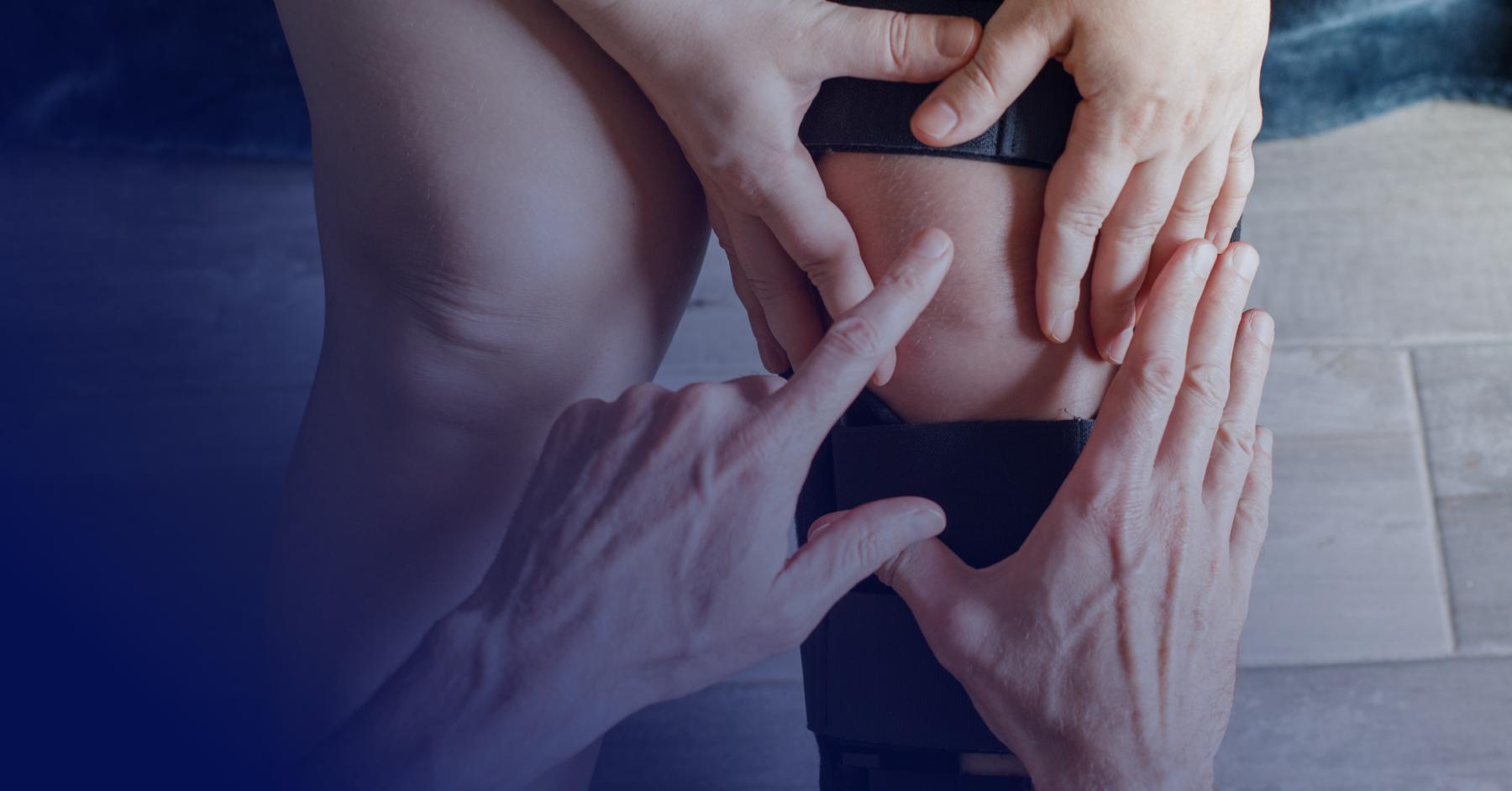How Runners Can Relieve Hip Flexor Pain
Hip Injuries

Hip flexor pain often stems from running, but it can be treated with some at-home therapies.
As an aerobic exercise, running can’t be beat. It strengthens the muscles, builds stamina, and boosts cardiovascular health. But as any dedicated runner will tell you, it can come with some aches and pains along the way — one of those being hip flexor pain.
Hip flexor pain results from repetitive, impactful actions, such as running on hard surfaces like pavement. The main symptom is pain along the front of the pelvis that becomes more pronounced when raising your knee to your chest. Let’s take a look at your hip flexor, why it’s so important, and how to manage the pain.
What is your hip flexor?
Your hip flexor is actually a combination of the psoas and iliacus muscles: two strong, large muscles that run along both sides of your lower body. They run from the vertebrae in the lower back, through the pelvis, and end at the inner side of the femur.
These muscles play an important role in how your body moves, especially when you run long distances. Your hip flexor enables you to draw your knee upward when you run while also supporting and stabilizing your spine. If the muscles are tight or strained, it can result in lower back pain.
While runners are most likely to experience hip flexor pain, football players, gymnasts, and rowers are at risk, too. Sedentary lifestyles can also cause hip flexor pain.
Six ways to relieve hip flexor pain

Relief from hip flexor pain involves conservative treatments, such as the six listed here. You should feel a decrease in pain within four to six weeks.
- Rest. Stop doing whatever causes the pain — that means staying away from the running track for a while. You should also limit other actions that aggravate a sore hip flexor, such as bending over or walking up and down stairs. If you must exercise, concentrate on upper-body workouts.
- Take OTC pain relievers. Ibuprofen, aspirin, and acetaminophen can ease the pain. Refrain from using them for an extended period of time.
- Apply ice. Apply a cold compress to the hip for 15 minutes, taking a break between each application. Do this four to six times for two days.
- Stretch. When the pain subsides, perform some exercises to stretch and lengthen the hip flexor muscles. One to try is the pirate stretch. Start by standing even with your feet. Step forward as if in a lunge. Bend and lower your back knee while keeping the lunging knee over the ankle, feeling a mild stretch. Hold for 20 to 30 seconds and repeat on the other side.
- Exercise. Your hip flexor works in concert with your core muscles, quads, glutes, and hamstrings, so it’s vital you strengthen those muscles, too. The plank exercise can do just that: Position yourself in a press-up pose, bending your elbows and resting your weight on your forearms. Align your body so it forms a straight line from shoulders to ankles. Brace your core and hold for 30 seconds to a minute. Try to hold for a total of three to six minutes, with intervals of rest.
- Fix your running form. Your hip flexor pain may be due to your running form. For example, are you placing your foot too far out in front of you when you stride? If so, you’re putting extra stress on your hip flexor. Work with a trainer to perfect your running form.
Within a few weeks, your hip flexor pain should be greatly diminished. You can also consult a physical therapist. However, if you experience severe pain in the hip or groin area or cannot bear weight on the hip, see a doctor for further medical attention.
Keep on running
Don’t let hip flexor pain stop you from running. At All Sports Physical Therapy, we’ve worked with many patients with hip flexor pain and helped them regain their strength and flexibility to get them back on the track. Contact us today for a consultation.



